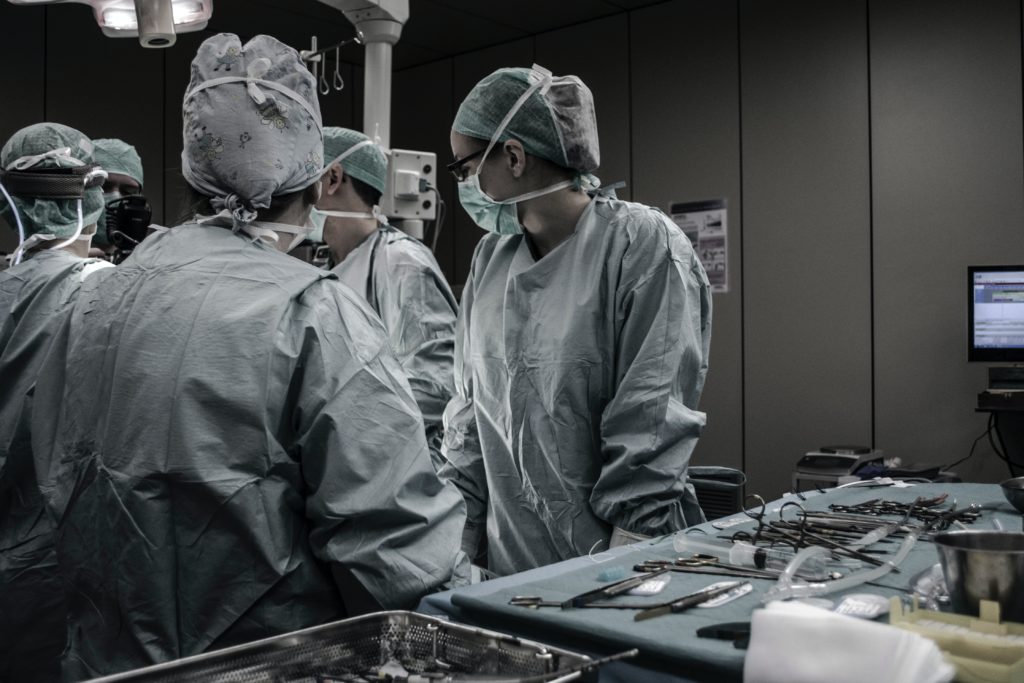
Total knee replacement surgery or total knee arthroplasty (TKA) is one of the most commonly performed orthopedic surgeries in the U.S. for individuals older than 40. Given historical trends, these procedures are anticipated to increase in volume by an estimated 143% by 2050.
In part 2, we examine contributing factors that might predispose a patient to an increased likelihood of excessive scar tissue formation after surgery which may lead to a manipulation under anesthesia (MUA) as discussed last week in this column. Along with muscle weakness due to disuse and immobility, scar tissue formation is thought to be a major cause of persistent pain and limited functionality after TKA. We will also consider some risk-reducing strategies.
Scar tissue is described as excessive collagen production and adhesions. Causing contractions in the joint that limits movement and is associated with pain and discomfort. In the knee, symptoms are intensified when walking and standing and are often more debilitating than the original condition. This negatively and severely impacts patients' well-being.
Numerous potential factors have been studied. Still, no clear consensus is reached on which factors increase the likelihood of excessive scar tissue formation after surgery. Some studies indicate that being female or younger in age might suggest a stronger immune response leading to increased scar tissue formation. Similarly, but inconclusively, early-onset osteoarthritis might be a risk factor. A higher body mass index (BMI), previous knee surgery, diabetes, pulmonary disease, depression all have been evaluated to differing degrees, none showing clear causation.
Surgery outcomes are multifactorial and individual. But, an appropriate risk-reduction strategy is progressive range of motion and strengthening exercises through physical therapy (PT). Physical therapy should ideally be initiated before surgery and continued after surgery to aid better outcomes. This approach is shown to reduce the incidence of additional interventions needed to release scar tissue adhesions, like manipulation under anesthesia (MUA/ Article-1).
It is important to get a head start on PT. The rationale is that the pre-surgery range of motion and strengthening of the joint is predictive of the final outcome. It also allows you to establish a relationship with your PT healthcare team and understand what the path ahead requires. It helps you set-up your support group and will increase your odds of success. About 25% of patients will fear using the joint after surgery; having established your PT relationship, discussed, and tried out your exercise program beforehand greatly reduces this risk of post-operative complications.
Outpatient physical therapy should be highly individualized and needs to be performed in a clinic under the supervision of a licensed physical therapist, preferably one who specializes in orthopedics. Your program will include strengthening, stretching, and functional exercises with the incorporation of balance training. Stretching and movement allow the range of motion to be increased and helps prevent scar tissue formation. Strengthening addresses the concern of quadriceps' weakening in the first weeks after surgery. Quadriceps strength is a strong predictor of functional performance. Balance training is important to reduce the risk of falls and further injury. Complimentary to outpatient PT is a home program or telerehabilitation, which requires the patient to carry-over their PT program on the days not receiving formal PT or in the case of illness or inclement weather. Hard work, dedication, and compliance are a vital to prevent complications and produce good outcomes.
An estimated 82 - 89 percent of first time TKA patients are satisfied with their outcomes. This data suggests that several patients are not achieving their goal of relieving pain and restoring functionality. It is important to establish clear and realistic expectations for your individual outcome. This requires frank and open discussion with your healthcare team, allowing you to be an empowered participant in regaining your best joint functionality. Most patients attain satisfactory recovery in 4-6 months; however, full recovery from total knee replacement surgery can take up to two years for some. The best long-term results are found in those initiating PT for range of motion and strengthening before surgery and continued immediately after surgery.
This column is a monthly feature of “Health & Exercise Forum” in association with the students and faculty of Geisinger Commonwealth School of Medicine.
Author: Hendrik Marais, MD, MS
Hendrik Marais, MD, MS, received his Doctor of Medicine degree from Geisinger Commonwealth School of Medicine in 2015 and his Master of Science degree in Global Medicine from Keck School of Medicine at USC in 2019. He is passionate about creating positive and empowered patient health outcomes. He grew up in South Africa and currently calls Scranton, PA home – where he enjoys cycling, swimming, and discovering the beauty of NEPA. He is a member of the American Medical Association, American Public Health Association, and the International Society of Physical and Rehabilitation Medicine. He plans to pursue a clinical career in physiatry.

NEXT MONDAY – Read Dr. Paul J. Mackarey “Health & Exercise Forum!” Read Part III of III on Recovery from Knee Surgery “Prehab.”
This article is not intended as a substitute for medical treatment. If you have questions related to your medical condition, please contact your family physician. For further inquires related to this topic email: drpmackarey@msn.com
Paul J. Mackarey PT, DHSc, OCS is a Doctor in Health Sciences specializing in orthopaedic and sports physical therapy. Dr. Mackarey is in private practice and is an associate professor of clinical medicine at Geisinger Commonwealth School of Medicine.